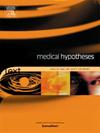骨修复的极限:3d打印,外泌体增强的自体移植物替代品的假设
IF 0.8
4区 医学
Q3 MEDICINE, RESEARCH & EXPERIMENTAL
引用次数: 0
摘要
我们假设个性化3d打印羟基磷灰石支架与自体生物成分(外泌体或间充质干细胞)增强,可以通过增强骨再生来解决大骨间骨缺损的挑战。目前的治疗方法,如自体移植物、同种异体移植物和合成支架有明显的局限性,包括供体部位发病率、免疫排斥和成骨不足。在我们提出的方法中,通过3D打印制造患者特异性血凝素支架,并注入来自患者骨髓来源的间充质干细胞或其外泌体的成骨因子。我们将在临床前模型中评估这些生物增强结构的成骨和血管生成潜力。此外,支架设计具有结构特征(例如,髓内钉或板状延伸),以确保在缺陷部位内稳定固定。为了验证这一假设,我们设想用四组进行比较研究:(1)自体骨移植物(金标准对照),(2)没有任何生物增强的3d打印HA支架,(3)植入自体间充质干细胞的3d打印HA支架,以及(4)植入自体间充质干细胞补充成骨外泌体的3d打印HA支架。结果指标包括骨愈合的速度和质量(植骨结合和x线结合的时间)、功能恢复和并发症发生率(包括任何翻修手术的需要)。我们还将评估生物终点,如新骨形成和血管化使用显微ct成像和组织学。如果成功,该策略将为临界尺寸的骨缺损提供一种可定制的、具有生物活性的替代方案,减少供体部位并发症并保留天然骨功能。本文章由计算机程序翻译,如有差异,请以英文原文为准。
Beyond limits in bone repair: A hypothesis for 3D-printed, exosome-enhanced autograft substitutes
We hypothesize that a personalized 3D-printed hydroxyapatite scaffold augmented with autologous biological components (exosomes or mesenchymal stem cells) can address the challenge of large intercalary bone defects by enhancing bone regeneration.
Current treatments like autografts, allografts, and synthetic scaffolds have significant limitations, including donor site morbidity, immune rejection, and insufficient osteogenesis. In our proposed approach, patient-specific HA scaffolds are fabricated via 3D printing and infused with osteogenic factors from the patient’s bone marrow–derived MSCs or their exosomes. We will evaluate the osteogenic and angiogenic potential of these bio-enhanced constructs in preclinical models. Additionally, the scaffolds are designed with structural features (e.g., intramedullary pegs or plate-like extensions) to ensure stable fixation within the defect site. To test this hypothesis, a comparative study is envisioned with four groups: (1) an autologous bone graft (gold-standard control), (2) a 3D-printed HA scaffold without any biological augmentation, (3) a 3D-printed HA scaffold seeded with autologous MSCs, and (4) a 3D-printed HA scaffold seeded with autologous MSCs supplemented with their osteogenic exosomes.
Outcome measures will include the rate and quality of bone healing (time to graft incorporation and radiographic union), restoration of function, and complication rates (including any need for revision surgery). We will also assess biological endpoints such as new bone formation and vascularization using micro-CT imaging and histology.
If successful, this strategy would provide a customizable, biologically active alternative for critical-sized bone defects, reducing donor-site complications and preserving native bone function.
求助全文
通过发布文献求助,成功后即可免费获取论文全文。
去求助
来源期刊

Medical hypotheses
医学-医学:研究与实验
CiteScore
10.60
自引率
2.10%
发文量
167
审稿时长
60 days
期刊介绍:
Medical Hypotheses is a forum for ideas in medicine and related biomedical sciences. It will publish interesting and important theoretical papers that foster the diversity and debate upon which the scientific process thrives. The Aims and Scope of Medical Hypotheses are no different now from what was proposed by the founder of the journal, the late Dr David Horrobin. In his introduction to the first issue of the Journal, he asks ''what sorts of papers will be published in Medical Hypotheses? and goes on to answer ''Medical Hypotheses will publish papers which describe theories, ideas which have a great deal of observational support and some hypotheses where experimental support is yet fragmentary''. (Horrobin DF, 1975 Ideas in Biomedical Science: Reasons for the foundation of Medical Hypotheses. Medical Hypotheses Volume 1, Issue 1, January-February 1975, Pages 1-2.). Medical Hypotheses was therefore launched, and still exists today, to give novel, radical new ideas and speculations in medicine open-minded consideration, opening the field to radical hypotheses which would be rejected by most conventional journals. Papers in Medical Hypotheses take a standard scientific form in terms of style, structure and referencing. The journal therefore constitutes a bridge between cutting-edge theory and the mainstream of medical and scientific communication, which ideas must eventually enter if they are to be critiqued and tested against observations.
 求助内容:
求助内容: 应助结果提醒方式:
应助结果提醒方式:


